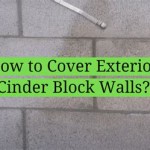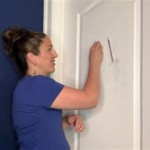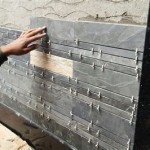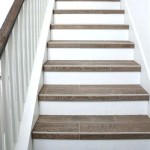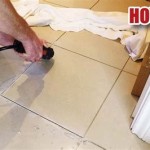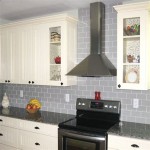Can You Put Luxury Vinyl On Top Of Ceramic Tile Floors?
The question of whether luxury vinyl flooring (LVF) can be installed over existing ceramic tile floors is a common one for homeowners considering a flooring upgrade. The answer is generally yes, but with several important caveats. A successful installation hinges on proper preparation and understanding the potential challenges. Directly installing LVF over tile offers several advantages, including saving time and money by avoiding the messy and labor-intensive process of tile removal. However, ignoring crucial preparation steps can lead to problems like telegraphing, where the grout lines of the underlying tile become visible through the vinyl, or even premature wear and tear of the new flooring.
Luxury vinyl flooring encompasses various formats, including planks, tiles, and sheets. Each format has specific installation requirements, though the fundamental principles of subfloor preparation remain consistent. Understanding these principles is crucial before undertaking any installation project. The primary goal is to create a smooth, level, and stable surface onto which the LVF can be adhered or floated. This ensures not only a visually appealing final result but also contributes to the longevity and performance of the new floor covering.
Key Considerations Before Installation
Before commencing any installation, a thorough assessment of the existing ceramic tile floor is essential. This includes inspecting for loose tiles, cracks, and unevenness. Any existing issues must be addressed before proceeding. Furthermore, the type of luxury vinyl flooring being installed and its specific manufacturer recommendations must be carefully reviewed. Different LVF products may have varying tolerance levels for imperfections in the subfloor.
One of the most critical considerations is the height difference between the existing tiled floor and adjacent flooring surfaces. Installing LVF can raise the floor height, potentially creating a tripping hazard or interfering with door swings. Careful planning is needed to mitigate these issues, which may involve transitions or adjustments to doorframes.
Finally, the presence of moisture is a significant concern. Ceramic tile is generally water-resistant, but the subfloor underneath may not be. Moisture can lead to mold growth and delamination of the LVF. A moisture test should be conducted to ensure the subfloor is sufficiently dry before installation begins.
Addressing these considerations proactively will significantly increase the likelihood of a successful and long-lasting installation. Neglecting these initial steps can ultimately lead to more costly repairs or even the need to replace the entire floor covering.
Preparing the Ceramic Tile Floor
Proper preparation of the ceramic tile floor is paramount to achieving a satisfactory outcome. This process involves cleaning, leveling, and filling grout lines. A clean surface is essential for proper adhesion if using glue-down LVF or for preventing the transfer of dirt and debris if using click-lock or loose-lay LVF.
The first step is a thorough cleaning. Remove all loose debris, dirt, and grime from the tile surface. A strong cleaner and a scrub brush are generally sufficient. For stubborn stains, a specialized tile cleaner may be necessary. Ensure the floor is completely dry before proceeding to the next step.
Next, inspect the tile floor for any loose tiles. Loose tiles must be re-adhered securely. If a tile is damaged beyond repair, it should be removed and replaced with a new tile of the same thickness. Leveling any height discrepancies at this stage is crucial.
The most common challenge in installing LVF over ceramic tile is dealing with grout lines. Grout lines create an uneven surface that can telegraph through the vinyl flooring, resulting in visible lines and potentially compromising the integrity of the LVF. To remedy this, the grout lines must be filled with a leveling compound designed for this purpose. The compound should be applied according to the manufacturer's instructions, ensuring it is completely dry and cured before proceeding. Multiple applications may be necessary to achieve a perfectly smooth surface.
Once the grout lines are filled and the leveling compound has dried, the entire tile surface should be lightly sanded to ensure a smooth, even finish. This will further minimize the risk of telegraphing and provide a better surface for adhesion if using glue-down LVF.
Installation Methods and Considerations
The chosen installation method for the luxury vinyl flooring will influence the preparation steps and the final outcome. The two primary installation methods are glue-down and floating (click-lock or loose-lay). Each method has its own advantages and disadvantages, and the best choice will depend on the specific LVF product and the condition of the existing tile floor.
Glue-Down Installation: This method involves directly adhering the LVF to the prepared tile surface using a suitable adhesive. Glue-down installation is generally considered more stable and durable than floating methods, particularly in areas with high traffic or moisture. However, it requires a perfectly smooth and level subfloor to prevent telegraphing and ensure proper adhesion. The adhesive must be carefully selected to be compatible with both the LVF and the ceramic tile. Improper adhesive selection can lead to bond failure and require costly repairs. It is also a more permanent installation; removing the LVF later can be difficult and damage the underlying tile.
Floating Installation (Click-Lock or Loose-Lay): Floating LVF utilizes a system of interlocking planks or tiles that connect to each other without being directly adhered to the subfloor. This method is generally faster and easier to install than glue-down, and it can be installed over slightly uneven surfaces. Click-lock systems typically involve interlocking edges that snap together, while loose-lay systems rely on the weight and friction of the material to stay in place. Floating floors are more forgiving of minor imperfections in the subfloor, but they can be more susceptible to movement or shifting, especially in large areas. A suitable underlayment is typically recommended for floating LVF to provide cushioning, sound insulation, and moisture protection. The underlayment should be thin and firm to avoid excessive flexing of the LVF planks.
Regardless of the installation method, it is crucial to follow the manufacturer's instructions precisely. These instructions will provide specific guidance on subfloor preparation, adhesive selection (if applicable), installation techniques, and maintenance recommendations. Deviating from the manufacturer's instructions can void the warranty and compromise the performance of the floor.
One final consideration is expansion and contraction. Like all flooring materials, LVF will expand and contract slightly with changes in temperature and humidity. It is essential to leave an expansion gap around the perimeter of the room to allow for this movement. The size of the expansion gap will vary depending on the size of the room and the type of LVF being installed. Failure to provide adequate expansion gaps can lead to buckling or warping of the floor.
In summary, successfully installing luxury vinyl flooring over ceramic tile floors requires careful planning, thorough preparation, and adherence to the manufacturer's instructions. By addressing potential challenges proactively and choosing the appropriate installation method, homeowners can achieve a beautiful and durable new floor without the hassle and expense of removing the existing tile.
The final result should be a smooth, aesthetically pleasing floor that enhances the overall appeal and value of the home. Remember to continuously maintain the new luxury vinyl floor and perform regular inspections to identify and address any possible issues early. This proactive approach guarantees the longevity and beauty of the installed floor.

Installing Luxury Vinyl Over Existing Tiles Choices Flooring

How To Install Luxury Vinyl Plank Over Tile Flooring

Transform Your Home Installing Vinyl Flooring Over Ceramic Tiles City Wall And Floor

What Type Of Flooring Can You Install Over Ceramic Tile

New Vinyl Plank Flooring Over Tile Table And Hearth

New Vinyl Plank Flooring Over Tile Table And Hearth

New Vinyl Plank Flooring Over Tile Table And Hearth

How To Install Vinyl Plank Floors In A Bathroom Over Tile

Can You Install Luxury Vinyl Plank Over Tile Flooring Liquidators

Should You Tile Over Vinyl Flooring Builddirect
Related Posts

